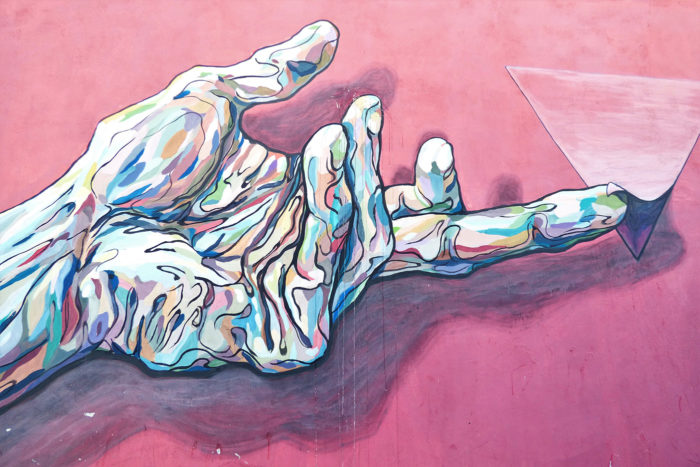
For artists with intentions of making connections with art professionals, seeking representation by a gallery, or simply wanting to become visible to a larger audience — you will need to become proficient at photographing your art in a way that presents each piece in its best possible light. If you prevail you will have succeeded in bridging the gap between your material work and the digital screens that have become the lens through which the world will be invited to experience it.
Here are 20 recommendations for how to professionally (or at least competently) photograph your painting, drawing, sculpture, or craft.
Location and Staging Considerations
1. Use a clean, simple background.
2. If your artwork is on loose paper, match it to something that can lean against, or hang on, a wall.
3. Choose a location with plenty of soft, natural lighting (e.g., near a large window) as direct light tends to be too harsh and can cast shadows, cause reflections or even alter the color of your piece.
Camera Setup and Composition Considerations
4. Use a microfiber cloth to clean your camera lens before shooting.
5. Use a tripod (or level surface) and set the self-timer to keep your camera perfectly still, which will ensure that your images are as sharp as possible.
6. Position your camera so it is perfectly parallel to the artwork being photographed (e.g., if your art is leaning against a wall you should tilt your camera to match the angle).
7. Position your camera horizontally or vertically to match the orientation of your piece.
8. Leave only a small amount of space around the edges of your piece in the [camera] frame.
9. Set the ISO of your camera to 100 or 200 for best image quality.
10. Set your camera’s aperture to f/8 for sharpest results.
11. Zoom-in slightly because camera lenses tend to work best when they are partially zoomed.
12. Turn off your flash, as well as the lights in your room in favor of natural light.
13. Pay attention to the white balance of your camera (adjust the white in the image preview on your camera to match what your eye’s see). If the auto white balance of your camera is tinting orange or blue try using a preset for your lighting environment (i.e., natural light).
14. Preview your image and use the exposure compensation feature in your camera to correct overly dark or overly bright appearance. Try to keep the color and exposure of your image as close as possible to the original artwork.
15. Preview your image to ensure that it’s in focus. Once you’re satisfied, take several shots of each piece.
16. Wait to pack up your gear until you have reviewed your photos on your computer screen at 100% zoom.
Post Production Considerations
17. Use the cropping tool of your favorite image editing software so you only see the canvas or frame of the piece itself (e.g., leave no visible borders). For sculptures, crop the image with a sufficient amount of white space around your piece.
18. Zoom to view each image at 100% and carefully review. Use the retouch tool to correct any problem areas.
19. Avoid over editing images and always favor the most realistic contrast and color adjustments possible.
20. Save images in JPEG format at ‘Very High’ or ‘Maximum’ quality.
Leave a comment to share additional thoughts or ideas about how to photograph artwork for online presentation (portfolio website, Instagram, etc). As an aside, our Made and Eero themes now feature an exciting tool to allow viewers to expand gallery images to fullscreen, and zoom-in even further to explore greater detail!


